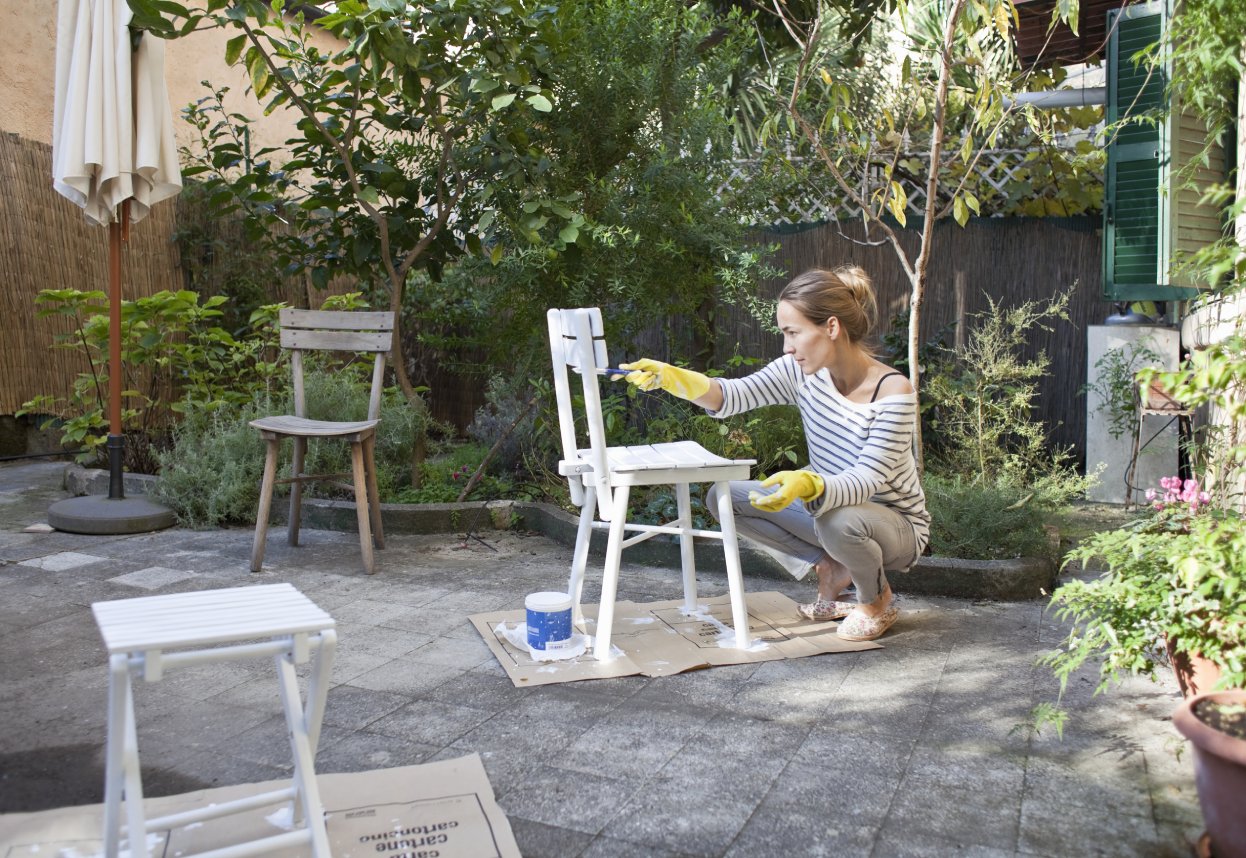
1. Choose the right stone: If you’re starting from scratch, the journey to extending the life of your stone patio begins right at the selection stage. Opt for stones that are known for their durability and resistance to weathering. Popular choices include granite, slate, sandstone, and limestone. Each of these stones can withstand temperature changes and resist moisture.
2. Regular cleaning: Sweep away dirt, leaves, and debris regularly to prevent them from accumulating on the surface and use a soft-bristle broom to avoid scratching the tiles. Additionally, a periodic deep cleaning using a mild detergent and your hose couldn’t hurt. Avoid using acidic or abrasive cleaners, as they can damage the stone’s surface.
3. Sealing: Sealing your stone patio tiles is an essential step to protect them from moisture, stains, and the effects of weathering. Choose a high-quality, breathable stone sealer suitable for your stone type. Apply the sealer according to the manufacturer’s instructions, and make sure to reseal your patio at regular intervals to maintain the protective barrier. You can also hire a handyman to do this!
4. Prevent weeds and moss growth: Regularly inspect the gaps between tiles and remove any sprouting plants right away. To prevent future growth, consider applying a polymeric sand or jointing compound between the tiles. These products harden when exposed to moisture, creating a barrier that inhibits weed and moss growth.
5. Address stains, in real time: Accidental spills and stains are bound to happen on your patio, but promptly addressing them can prevent permanent discoloration. Blot spills immediately and clean the area with a mixture of water and a gentle all-purpose cleanser like Salsuds or Branch Basics Concentrate. For very stubborn stains, consider using a poultice—a paste-like mixture that helps draw the stain out of the stone.
6. Protect against furniture damage: Over time, furniture and heavy objects can scratch or crack your stone tiles. Place protective pads or glides under furniture legs to prevent direct contact with the stone surface. And when moving furniture, lift instead of drag.
7. Handle weather extremes: Stone patio tiles are designed to withstand various weather conditions, but extreme temperatures can still take a toll. During winter, avoid using salt or harsh chemicals to de-ice the patio, as they can damage the stone.
8. Regular inspections: Make it a habit to inspect your stone patio tiles regularly. Look for any signs of cracking, chipping, or uneven settling.
Social Cookies
Social Cookies are used to enable you to share pages and content you find interesting throughout the website through third-party social networking or other websites (including, potentially for advertising purposes related to social networking).